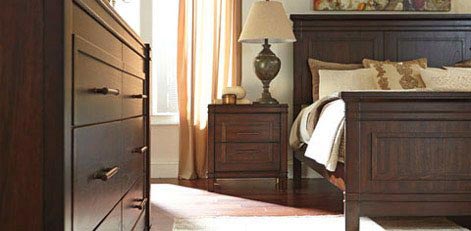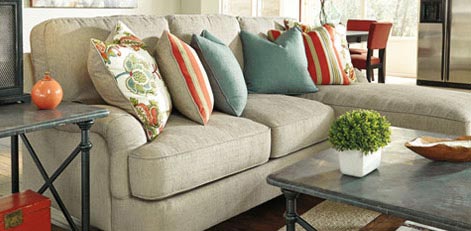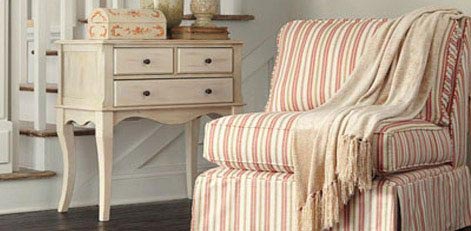Bookcases have been an essential part of our lives for centuries, serving as a home for our beloved books and a decorative piece in our living rooms, offices, and libraries. Whether you are a voracious reader with a large collection of books or someone who enjoys having a few favorite titles on display, bookcases offer a practical and stylish solution.
The Ultimate Bookcase Buying Guide Key Takeaways:

 @e.cl.e.c.t.i.c_b.oh.e.m.i.a.n
@e.cl.e.c.t.i.c_b.oh.e.m.i.a.nWhat is a Bookcase?
A bookcase is more than just a piece of furniture; it is a reflection of one's intellectual pursuits and aesthetic taste. At its core, a bookcase is a furniture item designed to store and display books. It typically consists of several horizontal shelves stacked one above the other.
Bookcases are ubiquitous. You can find them in almost every environment where books are present, providing an organized way to store and showcase books.
They also come in a wide range of sizes to cater to different needs. Some people prefer small, low models for their living rooms, while others opt for tall, ceiling-height models for their libraries or offices.
The design of bookcases varies greatly. Some have fixed shelves, while others offer adjustable shelves for more flexibility. Some bookcases also come with glass doors to protect the books from dust and add an elegant touch to the furniture.
Types of Bookcases
Bookcases are not just pieces of furniture that hold books. They are also statement pieces that can define the style and personality of a room.
In this section, we will discuss two main types of bookcases: traditional bookcases and specialized bookcases. Each type has its unique characteristics and uses, so let's dive in and explore them.
Traditional Bookcases
Traditional bookcases are the most common type of bookcases that you will find in most homes. They are usually placed flat against the wall, in stacks or ranges parallel to each other, or in bays or alcoves. This type of bookcase is often made from oak, which gives it a timeless and elegant look. Particularly, library bookcases made from oak are the epitome of elegance and sophistication.
In public libraries, multilevel stacks of traditional bookcases often serve as both structure and shelving. This means that these bookcases are not only used for storing books but also for defining spaces and creating distinct areas within the library.
In this way, traditional bookcases serve a dual function: they provide storage space and contribute to the overall architectural design of the space.
Specialized Bookcases
Specialized bookcases, on the other hand, are designed for specific uses or to cater to unique needs. For instance, the Barrister's bookcase is a portable bookcase developed for barristers who require many law books on the go.
This type of bookcase typically has a glass front to protect the books from dust and damage. It is also designed to be easily transported, making it perfect for professionals who need to bring their reference materials with them.
Another type of specialized bookcase is the bookcase bed frame. This is a functional addition to bedrooms, particularly for smaller spaces. With this type of bookcase, you can maximize your space by combining your bed and bookcase into one piece of furniture. This not only saves space but also provides easy access to your favorite books right from your bed.
Additionally, some bookcase bed frames come with built-in lighting, creating a cozy reading nook within your sleeping area.
Styling and Organizing Bookcases
Bookcases are a versatile piece of furniture that can add both style and functionality to your space. Let's dive in and explore how you can make the most of your bookcases.
Mix and Match
Don't just fill your shelves with books. Add decorative items like vases, picture frames, or plants to create visual interest. Grey bookcases or dark walnut bookcases can serve as a neutral backdrop for colorful accessories.
Theme and Cohesion
Create a cohesive look by organizing books by color, size, or genre. Large white bookcases are perfect for achieving a clean, minimalist aesthetic.
Functionality
Remember the practical aspect of bookcases. Open bookshelves and lighted bookcases can make it easier to find and display your items.
Size Matters
Choose a bookcase that fits your space and needs. 24 inch wide bookcases are great for small spaces, while 30 inch bookcases or 32 inch wide bookcases offer more storage for larger collections. For those with extensive collections, 36 inch bookcases might be the ideal choice.
Unique Designs
Don't be afraid to choose bookcases with unique designs. Chrome bookshelves can add a modern touch, while driftwood bookcases can bring a rustic charm to your room.
Considerations for Bookcase Material and Build Quality
When selecting a bookcase, the material and build quality are as important as the design. The right choice ensures durability, functionality, and aesthetic appeal.
Materials
Solid Wood
Known for its durability and classic appeal. Solid wood bookcases, like those made from oak or mahogany, offer longevity and a timeless look. They are ideal for traditional and rustic interiors.
Engineered Wood
Includes MDF and particle board. These are cost-effective and come in various finishes. Engineered wood bookcases are lighter and suitable for those who frequently redecorate.
Metal
Offers a modern and industrial look. Metal bookcases are sturdy and can support heavy loads, making them ideal for extensive book collections or office environments.
Glass
Adds a contemporary touch. Glass bookcases are perfect for displaying decorative items but require careful handling and regular cleaning. This type of bookcase can add a sleek and elegant look to any space.
Build Quality
Joinery Techniques
Dovetail or mortise-and-tenon joints indicate superior craftsmanship compared to glue or nails. Bookcases built using these joinery techniques are likely to be more durable and sturdy.
Weight Capacity
Ensure the bookcase can support the weight of your books and objects. Heavier collections, such as encyclopedias and art books, may require bookcases with reinforced shelves or additional support.
Shelf Thickness
Thicker shelves resist sagging over time, especially under heavy loads. If you have a large collection of heavy books, consider choosing a bookcase with thicker shelves to ensure they can withstand the weight.
Where to Place Your Bookcases
Choose a bookcase that fits comfortably in your space without overcrowding. 24 inch wide bookcases are great for small spaces, while 36 inch bookcases suit larger rooms.
Regardless of the room’s size, the placement of your bookcase can transform its functionality and aesthetics. Proper planning ensures it complements your space effectively.
Room Dividers
Use open bookshelves as dividers in larger rooms to create distinct areas without blocking light. These open bookshelves can serve as both storage and visual separation, allowing you to define spaces within the room.
Corner Placement
Maximize the corners of your room by placing a corner bookcase. This makes sure you use the space well and adds an interesting focal point to the room.
Under Stairs
If you have a staircase with empty space underneath, consider installing a bookcase to utilize this often-neglected area. It can turn the space into a cozy reading nook or additional storage.
Underutilized Spaces
Place bookcases in hallways, under stairs, or in alcoves to utilize unused spaces effectively. With this, you can make the most of every inch of your home and create functional storage solutions.
Maintenance and Care
To keep your bookcase in good condition, regular maintenance and care are essential. Here are some tips to help you maintain the longevity of your bookcase:
Dust Regularly
Cleaning your bookcase regularly will prevent dust buildup and keep it looking clean and fresh. Use a soft cloth or a duster to remove any dust from the surface and shelves gently.
Avoid Direct Sunlight
Direct sunlight can fade the color of your bookcase and damage the materials over time. Place your bookcase away from windows or use curtains or blinds to block out the sun.
Use Proper Cleaning Products
When cleaning your bookcase, use mild cleaning products that are specifically designed for the material of your bookcase. Avoid harsh chemicals that can cause damage.
Handle with Care
When moving or rearranging your bookcase, be careful not to scratch or dent the surface. You should lift and carry the bookcase instead of dragging it across the floor. Additionally, avoid placing heavy objects or stacking too many books on one shelf to prevent sagging or damage.
Prevent Water Damage
Keep your bookcase away from areas prone to moisture or humidity, such as bathrooms or basements. Water can warp the wood or cause mold growth. If spills occur, wipe them up immediately to prevent staining or water damage.
A Case for Bookcases
Choosing the perfect bookcase goes beyond mere functionality. It's about creating harmony between your literary collection and the aesthetics of your living space. From the stately elegance of dark walnut bookcases to the airy openness of driftwood bookcases, your choice not only reflects your style but also shapes the ambiance of your space.



















